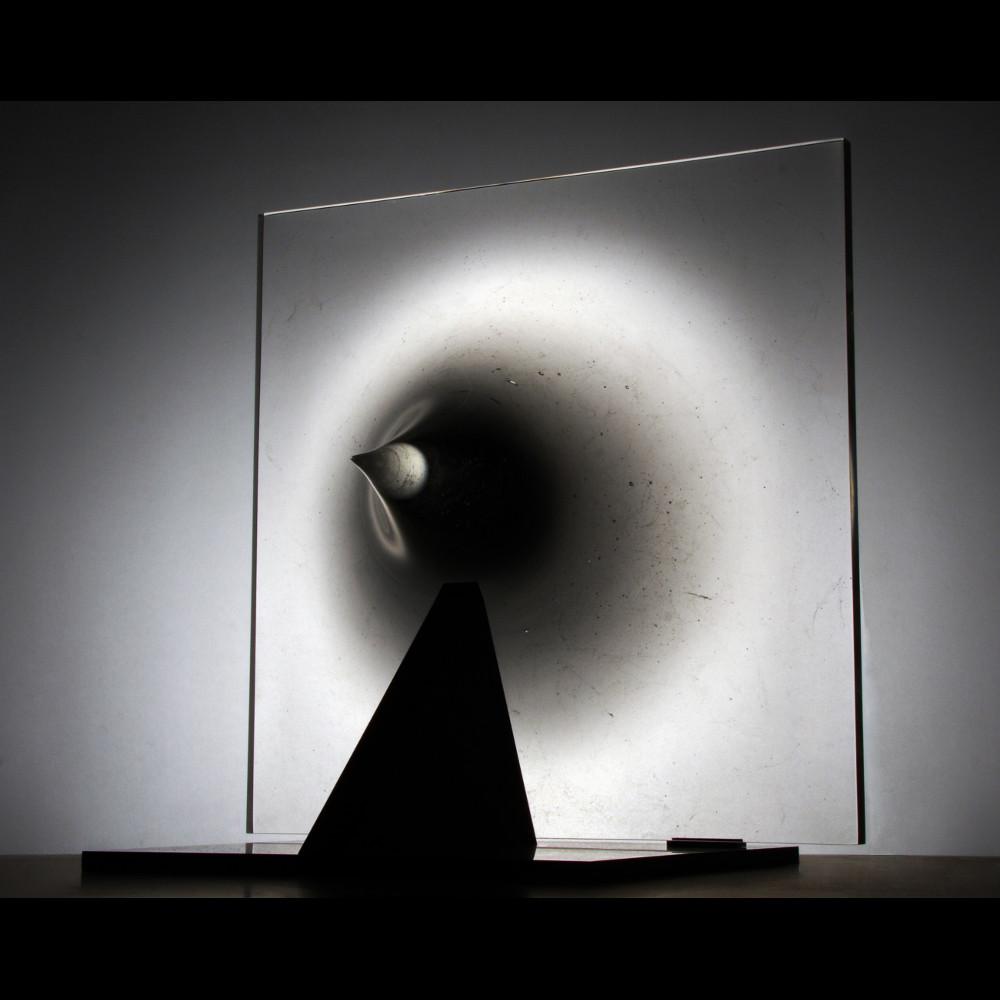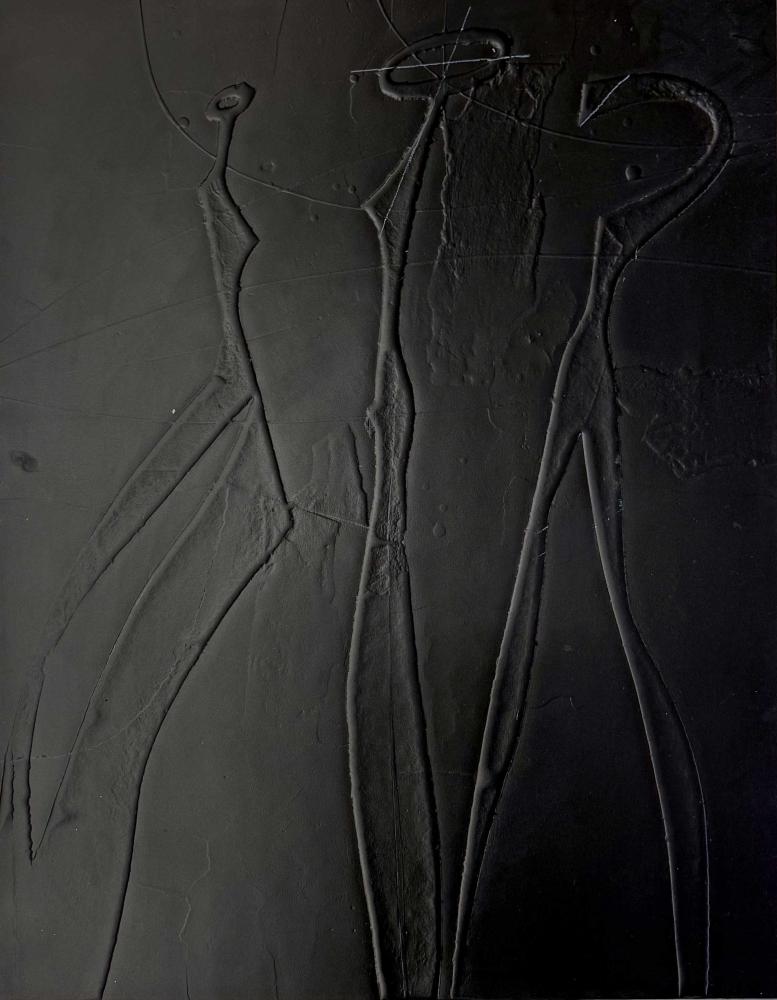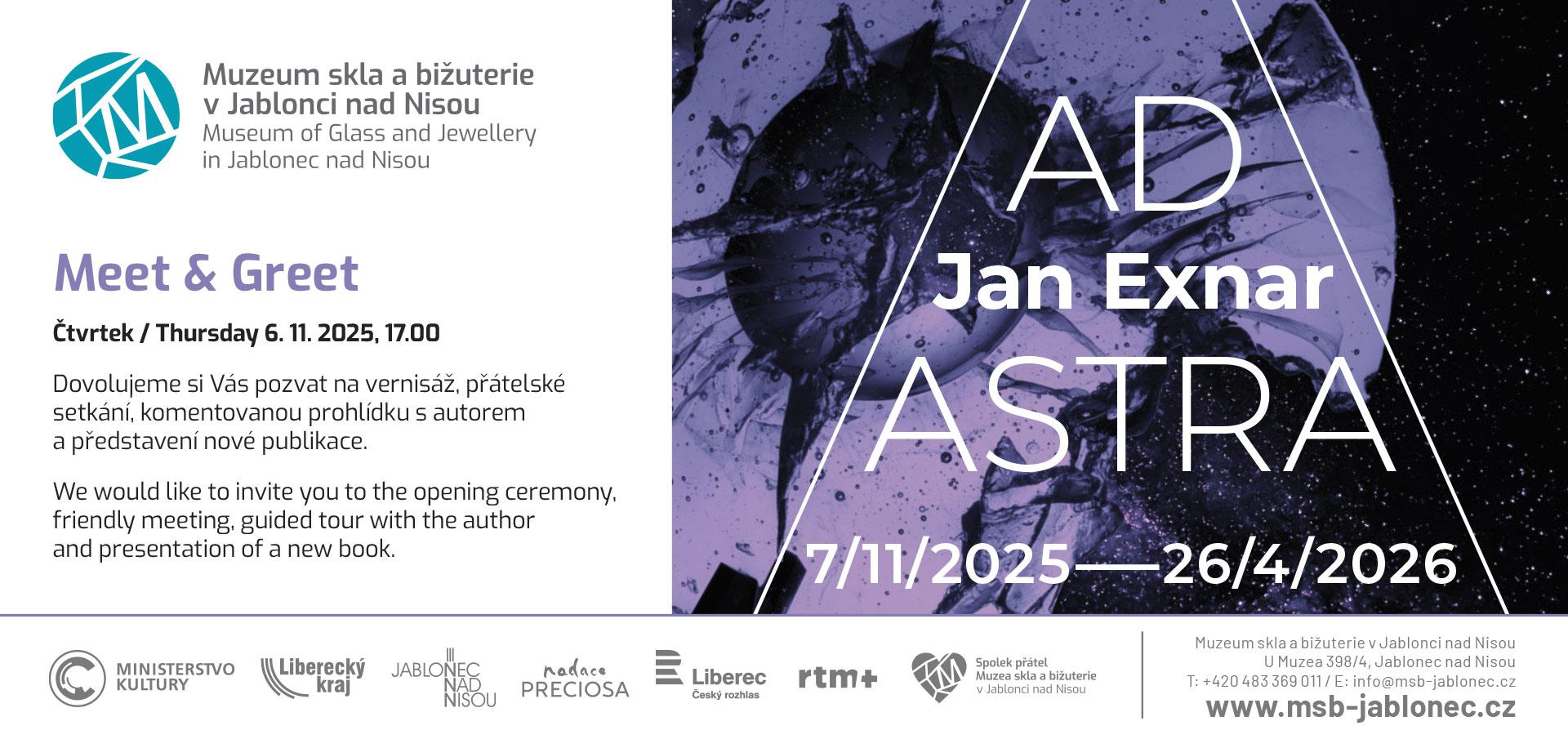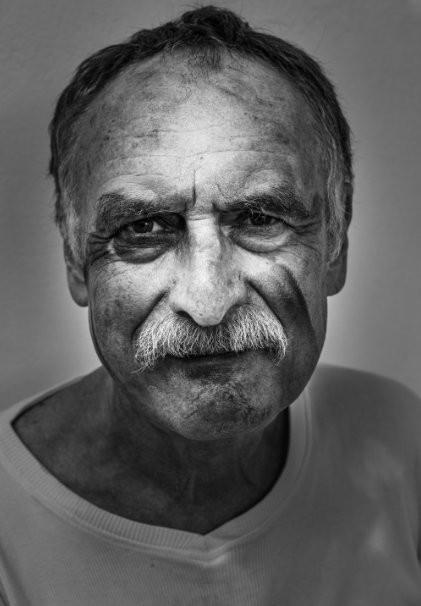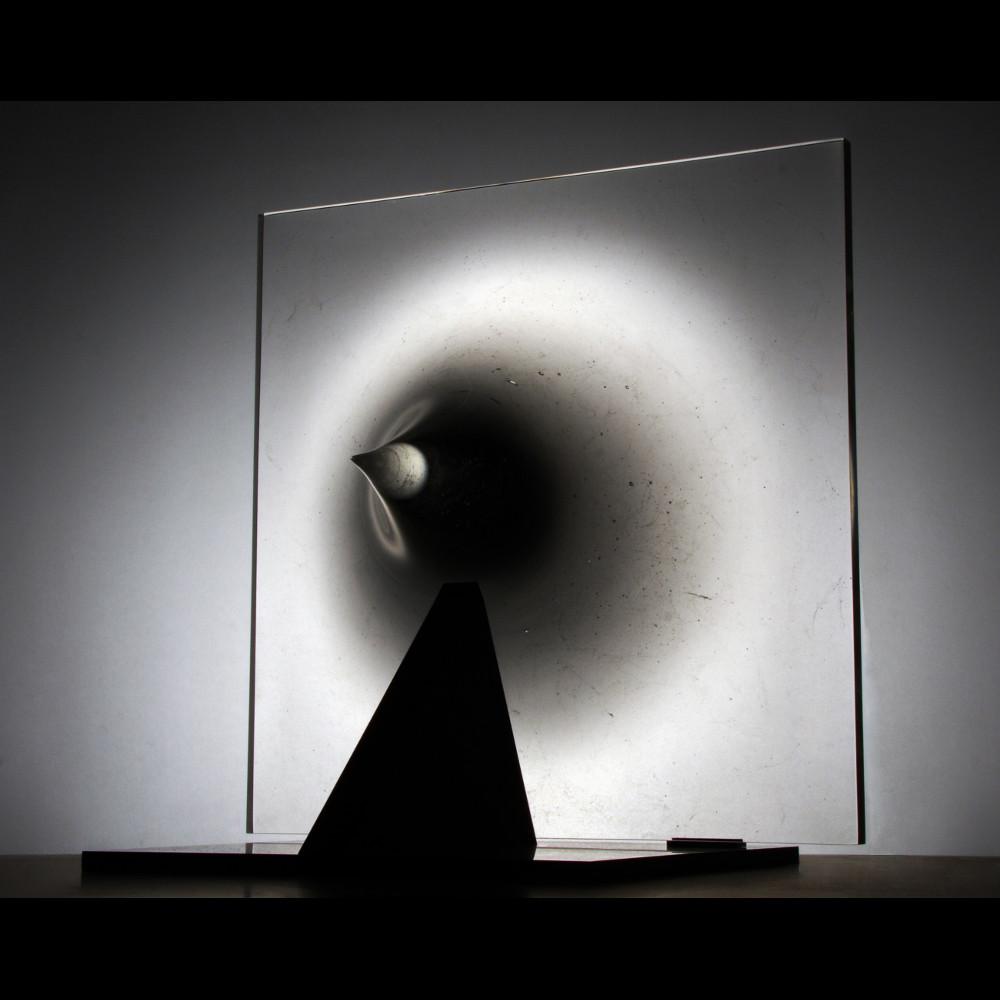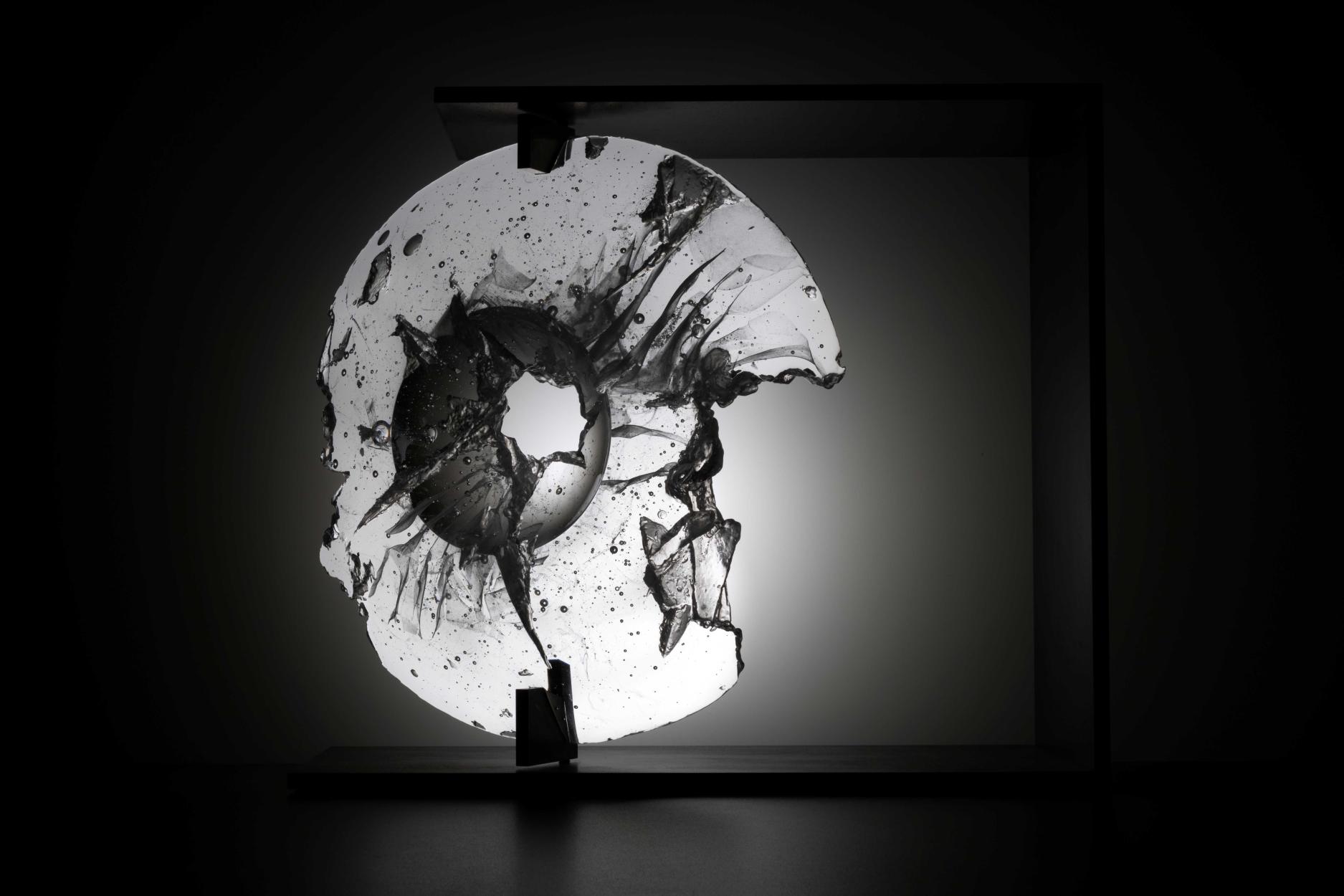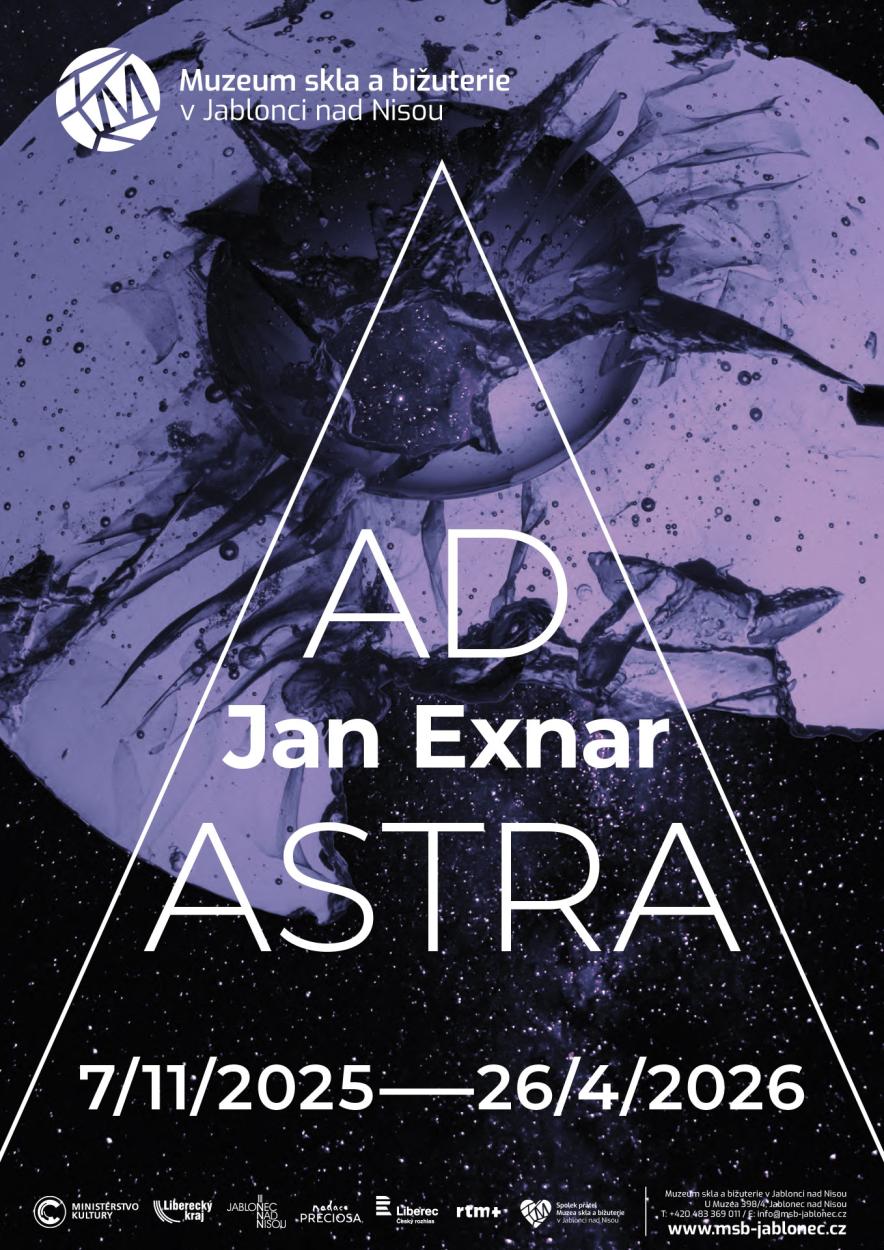The Glass Universe of Jan Exnar
Large objects made of molten glass, paintings, graphics, and, for the first time, new moltendrawings will be presented at the Museum of Glass and Jewelry in Jablonecby one of the stars of the Czech glassmaking world.
Artist, designer, and educator Jan Exnar (*1951) is a graduate of the Secondary School of Applied Arts in Železný Brod, Department of Glass Shaping, and the Academy of Arts, Architecture, and Design in Prague, where he attended the glass studio of Prof. Stanislav Libenský. Since 1976, he has been working as an independent artist and is a member of the Rubikon group of artists. Until 2008, he worked as an external designer for the Beránek glassworks in Škrdlovice. Since the 1970s, his wide-ranging artistic portfolio has also included works in public spaces, including stained glass. Over the course of four decades, he has presented his work at dozens of solo and group exhibitions at home and abroad, and his works have become part of many prestigious public and private collections in Europe and overseas.
For the exhibition in Jablonec, Exnar, together with curator Petr Nový from the Museum of Glass and Jewelry, carefully selected a collection of objects, canvases, and drawings from his work that actively communicate with the space of the atypical museum extension. It also includes a new piece that has not yet been seen at any exhibition. These are opaxite fused drawings, which the author himself refers to as liquegraphs, representing not only his further artistic position, but also his constant desire to experiment and develop. "Jan Exnar is, among other things, also an excellent glass technologist, melting his works himself in his studio in the Vysočina region. He understands glass and is able to make excellent artistic use of this knowledge," adds Nový.
Exnar's fundamental inspiration is the universe. His works can be compared to studies of emerging and disappearing planets, eternal souls, and guardians of the universe. He is an essential constructor. His universe is not a chaotic jumble of amoebas, but a planetary system in which he patiently develops his aesthetics. His works complement each other, communicate with each other, literally orbiting around each other. "Because Jan Exnar now focuses primarily on his own work and has significantly reduced his public appearances, we are very pleased that he accepted our offer. Our goal is to create a diverse exhibition program, an important part of which is also to commemorate the work of Czech artists with a great international reputation, among whom Exnar definitely belongs," said museum director Milada Valečková about the exhibition.
The exhibition JAN EXNAR – AD ASTRA can be visited at the Museum of Glass and Jewelry in Jablonec nad Nisou until April 26, 2026.

